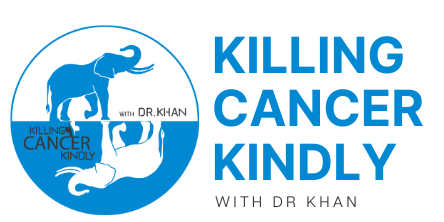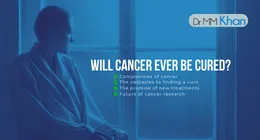Cancer continues to be one of the most concerning and feared diseases globally. A diagnosis often stirs up emotions of dread, despair and sadness among patients and families. However, while cancer remains a formidable adversary, the outlook today is more hopeful than ever before. Significant advances made in awareness, early detection, treatment options, and preventive strategies now provide tangible reasons for optimism.
Improved Cancer Treatments and Survival Rates
Medical researchers have made remarkable strides in treating cancer over the past several decades. While late-stage aggressive cancers remain a challenge, treatment outcomes for many common cancer types have improved tremendously.
Targeted Therapies
Groundbreaking targeted drugs that block specific molecules cancer cells need to grow have expanded treatment options enormously. HER2 blockers like Herceptin have made a major impact in breast cancer. BCR-ABL inhibitors like Gleevac have revolutionized chronic myelogenous leukemia treatment, with 5-year survival rising from just 20% to over 90% in patients taking these drugs.
Immunotherapy
Drugs that activate the body’s immune system to identify and destroy cancer cells have proven highly effective against various cancers. Checkpoint inhibitor immunotherapies are now first-line treatments for metastatic melanoma, non-small cell lung cancer, kidney cancer and others. Durable long-term remissions are being achieved.
Radiation Therapy
More precise external beam radiation techniques like proton beam therapy now allow high doses to be delivered directly to tumor sites while minimizing exposure of surrounding healthy tissues. This reduces treatment side effects and improves outcomes.
Minimally Invasive Surgery
The advent of robotics and laparoscopy have enabled complex cancer operations to be performed through tiny incisions. This translates to reduced risk, less scarring, shorter hospital stays and faster patient recovery.
Supportive Care
Better management of treatment side effects like infection, nausea, fatigue and anemia enables patients to complete prescribed therapy regimens fully. This improves survival rates by preventing interruptions.
Thanks to such progress, survival statistics for common cancers continue to improve:
- Breast cancer 5-year survival has risen from 75% in the 1970s to over 90% today for early stage disease. Localized breast cancer now has close to 100% 5-year survival.
- 5-year survival for localized prostate cancer has surged from just 68% in the 1970s to over 99% currently.
- Melanoma diagnosed in early stages before spreading now has 5-year survival exceeding 99%.
- Hodgkin’s lymphoma 5-year survival has climbed from 69% in 1960s to 88% today.
The Vital Role of Prevention
While better treatment options provide hope, preventing cancer from developing in the first place remains the most effective protective strategy. Research indicates that between 30 to 50% of cancer cases are actually avoidable through lifestyle modifications and risk reduction.
Major Modifiable Lifestyle Risk Factors
Some of the key lifestyle factors that can be altered to reduce cancer risk substantially include:
Tobacco Use
Smoking is responsible for approximately 30% of all cancer deaths worldwide, according to WHO and CDC estimates. Quitting smoking and avoiding secondhand smoke exposure are among the most impactful preventive steps one can take.
Diet and Physical Inactivity
Carrying excess weight, poor nutrition, and sedentary lifestyles collectively account for 30-35% of cancers. Regular exercise and healthy eating habits are protective.
Anti-Cancer Diets
Diets high in fruits, vegetables, whole grains and healthy fats appear to suppress cancer development. Antioxidants, fiber and certain nutrients in plant foods exhibit anti-cancer effects.
Benefits of Exercise
Regular physical activity supports healthy body weight, reduces inflammation, balances hormones, and improves immune function – all protective against cancer.
Alcohol Use
Alcohol consumption is associated with higher risk of breast, colorectal, esophageal, liver and other common cancers. Reducing alcohol intake is advised to lower risk.
Sun and UV Exposure
Many skin cancers are preventable by minimizing unprotected exposure to solar ultraviolet radiation through sunlight or tanning beds.
Secondary Prevention – Early Detection
Alongside lifestyle changes, adhering to recommended cancer screening guidelines tailored to your age and risk factors offers the best prospect of detecting cancer in early curable stages.
Screening Tests
Screening modalities like mammography, colonoscopy, Pap smears, PSA tests, lung CT scans for heavy smokers and others can detect tumors or precancerous lesions early.
Benefits of Early Detection
Early detection allows cancer to be treated promptly before spreading, which greatly improves prognosis. Screening combined with lifestyle prevention provides optimal safeguards.
Tertiary Prevention – Risk Reduction
For patients who already had cancer, making comprehensive lifestyle changes after treatment can help lower risks of recurrence, secondary cancers or other chronic diseases. Ongoing monitoring is also important.
Participation is Key
Progress against cancer hinges on enthusiastic participation at all levels – individuals prioritizing prevention and screening, doctors emphasizing it, corporations promoting wellness, and policymakers advancing public health strategies centered around informed lifestyle choices and early detection. Collective action has the power to dramatically curb cancer incidence and mortality rates worldwide.
Reasons for Optimism
While significant challenges remain, there are compelling reasons to be hopeful and optimistic about the future landscape of cancer prevention and care. Through increased awareness, advancing technology, and a comprehensive strategy focused on healthy lifestyles, screening, and research – beating cancer becomes an achievable goal.
Improved Awareness and Education
Greater public awareness about cancer risk factors, screening guidelines, and prevention strategies empowers individuals to lower their risks. As people become informed about lifestyle choices that can reduce cancer risk, as well as the importance of early detection, they are able to take proactive steps to safeguard their health.
Community outreach campaigns, patient advocacy groups, and resources like Dr. Mohammad Muneeb Khan’s book “You’ll Wish You Were an Elephant: Killing Cancer Kindly” play a key role in spreading lifesaving knowledge and cancer prevention education. Dr. Khan is an experienced oncology consultant dedicated to patient education and holistic cancer care. His book provides vital insights into understanding cancer, outlining lifestyle changes to reduce risk, describing screening guidelines, and detailing innovations in cancer treatment. By arming the public with awareness, mindset shifts occur making cancer prevention a priority.
Continued Innovation and New Technology
The past few decades of progress against cancer were made possible by dedicated medical research and rapid advances in technology. Continued innovation promises to expand early detection and treatment options even further. Screening tests are becoming more accurate and less invasive. Artificial intelligence is revolutionizing diagnosis and personalized treatment plans. Robotics, nanotechnology, 3D printing, and other emerging fields are transforming surgery, drug development, and biopsy procedures.
With so many brilliant minds and resources dedicated to scientific discovery, new breakthroughs are continually emerging. Exciting immunotherapy developments are already changing treatment paradigms. Further biological insights will uncover more drug targets and biomarkers. Technical leaps forward will improve the efficacy and precision of radiation therapy, imaging, monitoring, and data-driven treatment. Continued innovation provides ample justification for future optimism.
Comprehensive Prevention and Screening
Implementing robust cancer screening programs while promoting healthy lifestyles and anti-cancer behaviors through public policy and education initiatives can meaningfully reduce the burden of cancer worldwide. Certain countries have seen enthusiastic public participation in screening drives, coupled with taxation and awareness campaigns targeting tobacco, resulting in major declines in lung cancer rates. Sustained comprehensive strategies focused on prevention, screening, and early intervention can help alter cancer risk and outcomes drastically.
A Multi-Pronged Strategy is Key
Optimism is justified because beating cancer requires mobilizing our medical knowledge, technological innovativeness, and collaborative willpower simultaneously. No single ‘magic bullet’ can win the war on cancer. Instead, a multi-pronged strategy across medical research, clinical care, public health policy, and education endeavors – with participation from governments, nonprofits, corporations and citizens – is key to achieving lasting progress.
The knowledge, tools and political will exist to prevent and treat cancer effectively through both lifestyle changes and medical advances. United by purpose, we can mount an unstoppable offensive against cancer, from all directions, across all segments of society. This collective action holds the promise of one day turning cancer into a preventable, highly treatable or curable disease rather than a dreaded killer. There are always grounds for hope when knowledge and human ingenuity combine towards tackling any problem, even one as formidable as cancer.


